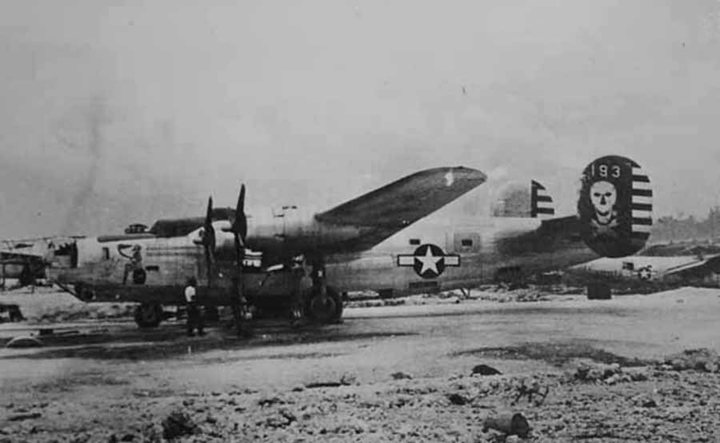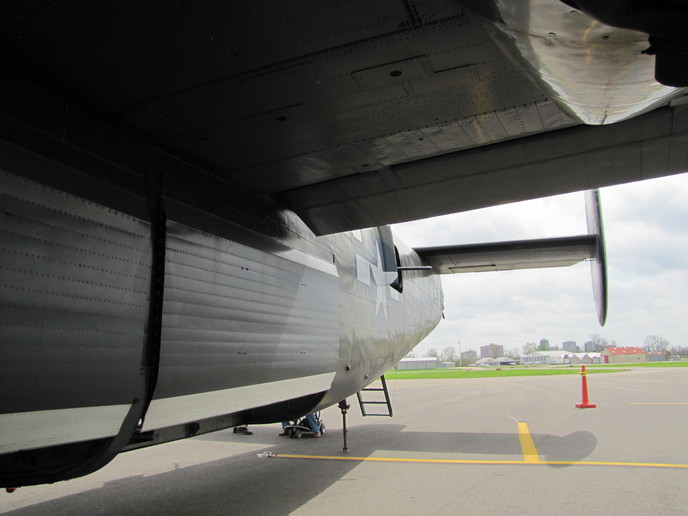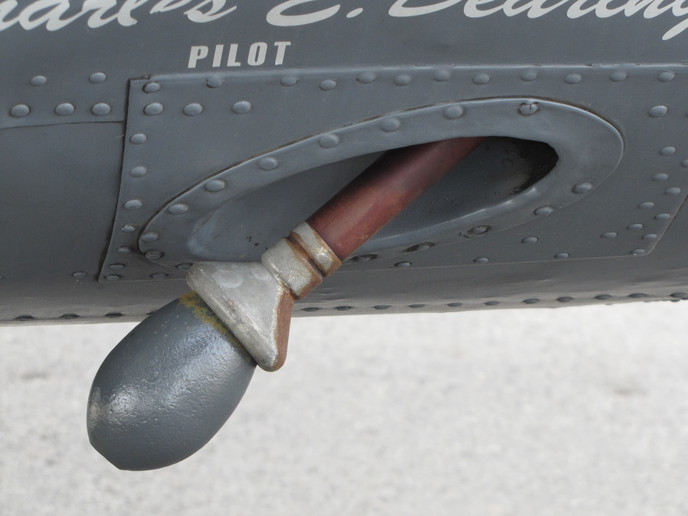i saw a picture of the b-24 at the air force museum, i know this is a high wing and low to the ground plane compared to the b-17, or b-29, but unless the nose gear on this one has partially retracted over time, it doesnt look like a bowling ball would roll under the plane,so how were the bombs loaded in the plane ??
You are using an out of date browser. It may not display this or other websites correctly.
You should upgrade or use an alternative browser.
You should upgrade or use an alternative browser.
- Thread starter ericlb
- Start date
gtractorfan
Well-known Member
That's a good question. Not the same kind of plane but I remember seeing the Enola Gay B 29 was backed over a pit to load the "big bomb".
yes, whats neat is one of those pits is still there on the island and has been made into a memorial, also google earth will let you see it, with up close pics ,and also runway "able" where the enola gay as well as bockscar took off since this base was abandoned after the war the paving whats left of it, is the actual paving used
gtractorfan
Well-known Member
Google is your friend, I googled this, didn't find any pictures directly showing bombs being loaded, but this one shows a little more space beneath than you suggested.


crawlerjohn
Member
crawlerjohn
Member
(quoted from post at 05:50:14 04/18/16) The landing gear is like a large nitrogen charged shock, over time the nitrogen bleeds away and you have to recharge it.
Thats pretty much it.
All the years that my dads buddies got together and I listened to them talk about the bombers and those were the two names they always brought up. If you look up the history of the B24 they list them as the nickname for the B-24. They also talked about how much more damage that a B-17 could take and still make it back from a mission.
Fordfarmer
Well-known Member
My wife's grandfather was part of a B24 bomber crew in the 389th Bomb Group. His plane, the Screamin Mimi, was later transferred to the 492nd and renamed the Worry Bird.
Interesting anecdote about the B24: at the beginning of the war we gave some to the Brits for Lend Lease. In one unit, they reported consistently that the bomb bay doors would not open at altitude. Once the plane landed and an American crew took it up, it worked flawlessly. Then the Americans landed it and the Brits took it up again, and they still couldn't get the bomb doors to open. Then the Americam crew chief thought he'd go up with the Brit crew to see if it was somethbing they were doing. What he saw was that once the plane reached cruising altitude, the Brit crew members, having drank a lot of tea and coffee before takeoff, now had to off-load said cargo. They, one by one, went aft and relieved themselves in the bomb bay. At altitude, it was so cold that the "used coffee" instantly froze and the resulting ice jammed the doors. They were of the "roll-top" desk variety so a little ice could jam the mechanism. The cure for that particular bomb door problem, was for the crews to bring a bucket into the airplane like the Americans did.
I believe this is the "roll-top desk" bomb loading door on the B-24. And, since Deere54 brought up the subject of off-loading used tea or coffee, also shown is a nozzle protruding from the B-24 that drained said liquid from the plane. This was explained to me by an old veteran friend of mine who flew 30 missions as a top turret gunner in the in the B-17 and the B-24. He said the guys would often try to "hold it" until they got over Germany.




Jerry, I think that is a picture of the trailing radio antenna, not the relief tube. Most relief tubes are a 'venturi'. The antenna had a weight on the end of the wire to make it stream properly. Enjoyed this thread.
The man that got me started flying was a B-24 Flight Engineer in the 20th Photo Mapping Group, in the Pacific.
Garry
The man that got me started flying was a B-24 Flight Engineer in the 20th Photo Mapping Group, in the Pacific.
Garry
Similar threads
- Replies
- 18
- Views
- 2K
We sell tractor parts! We have the parts you need to repair your tractor - the right parts. Our low prices and years of research make us your best choice when you need parts. Shop Online Today.
Copyright © 1997-2024 Yesterday's Tractor Co.
All Rights Reserved. Reproduction of any part of this website, including design and content, without written permission is strictly prohibited. Trade Marks and Trade Names contained and used in this Website are those of others, and are used in this Website in a descriptive sense to refer to the products of others. Use of this Web site constitutes acceptance of our User Agreement and Privacy Policy TRADEMARK DISCLAIMER: Tradenames and Trademarks referred to within Yesterday's Tractor Co. products and within the Yesterday's Tractor Co. websites are the property of their respective trademark holders. None of these trademark holders are affiliated with Yesterday's Tractor Co., our products, or our website nor are we sponsored by them. John Deere and its logos are the registered trademarks of the John Deere Corporation. Agco, Agco Allis, White, Massey Ferguson and their logos are the registered trademarks of AGCO Corporation. Case, Case-IH, Farmall, International Harvester, New Holland and their logos are registered trademarks of CNH Global N.V.
Yesterday's Tractors - Antique Tractor Headquarters
Website Accessibility Policy

